Until the age of twenty-two I had a secret wish to be a sailor. Later, somewhat burdened by my own and others’ expectations, I dreamed of driving a a bus. (Routine, predicability, timetable, boredom, then home to write the novel after supper).
My ambition was to sail a proper ship that crossed the Indian Ocean, ploughing steadfastly through dark blue waves, casting back a wake of churning white and jade coloured foam. I would see dolphins and flying fish, misty blots of land, the sun’s chin balanced on the horizon and hear the sonorous boom of the ship’s foghorn. I loved the heaving roll under my soles, a taste for which was acquired on long voyages taken by my family in the 50s, when everyone and everything came through the Suez Canal. The journey lasted 21 days on the Jal Jawahar (our proud post-Independence merchant carrier named after our first, glamorous Prime Minister). There were also the P&O’s Himalaya, Strathaven and the LLoyd Triestino boats which docked at Naples. The sight of post-war ragged Italian children sent frissons of shock through the passengers, who watched them scrambling like zoo monkeys for ice-cream, which the passengers tossed over the rails.
Barbara was my best friend. We kept a dignified distance from a curly-haired boy called Clive who called my brother a black monkey. (“Stupid, why didn’t you call him a white pig?”). I have a photo of Barbara and myself perched on the tarpaulin that covered the salt-water swimming pool, in which we’d learned to swim. “Much easier in salt-water. It keeps you afloat” said my Dad. “And your blue dress is the exact colour of the Mediterranean. You’ll see.” For elevenses we were served beef tea by pea-jacketed stewards. There were also trays of fat Jaffa oranges, which sectioned neatly, and salty biscuits. Children ate lunch and supper separately from parents and we somehow mastered the tricky art of twisting spaghetti around our forks, without any dangly ends. Lloyd Triestino was renowned for its cuisine.

An old bogey- the Bay of Biscay
It all came back on the ferry to Bilbao. The compact cabin, the porthole and tiny bathroom. The cabin was so warm that I arranged my picnics for the next two days on the windowsills and hoped the yogurt wouldn’t curdle. The Cap Finisterre is a giant flat bottomed vessel designed to shrug off the buffeting Atlantic waves. In my childhood a shiver of anticipation rippled through the passengers as we approached the Bay, three of four days after heading off from Tilbury or Southampton. Nearly everyone turned the colour of pea soup and had to lie down on their bunks. On the Cap Finisterre one hardly felt anything, whereas then, whole china services would slide off tables in slow motion and crash sickeningly to the floor, while passengers wondered if their last hour had come.

Coming into the port of Rostock
The Bilbao ferry can accomodate more than 300 cars, lorries, caravans in its gargantuan belly. Playing to the idea of a mini-cruise there were quizzes, a cinema, showing The Iron Lady, whisky tastings, shops, a cafe, a proper silver service restaurant and a deck large enough to jog on.
Great bulky lorry drivers with tattoos ranged themselves impassively in front of TVs accompanied by cans of lager and packets of crisps. The screens flashed images of Afghanistan and Phil Mitchell. When supper time came, large bottomed women and men ambled to the cafe and filled up brown paper bags with sandwiches and heated meals in tinfoil packets.
“Come and join us for dinner.” Angela and Josie, two friends on their way to Murcia with their dogs, noticed that I was reading a book in a corner. I was glad of the company, but felt a bit shabby compared to their smart get-ups. Josie, who I had thought to be Angela’s mother, beckoned the Maitre de (a stately Frenchman with a languid condescending air).
“Have you any gluten-free food?” Josie enunciated carefully in broad Yorkshire. “You see I’m allergic to wheat. Would you ask the chef please?” She unfolded her napkin.
The Maitre de had been shifting from foot to foot. He knew the Anglais. Always wanting special consideration. He went off to ask the chef.
“It’s terrible”, Josie sounded outraged. “I can go to M & S or Morrison’s and there’s shelf after shelf of stuff I could eat. You’d think someone would tell them. Think I’ll write to Head Office. Everyone knows about gluten-free!”
The waiter came back. “You can ‘ave steak or omlette.” He arched his eyebrows and I could have sworn I heard him sniff.
“Two steaks please. Medium. And two glasses of Anjou. I did like that red wine last time.”
The wine arrived in a silver bucket. It was rose of course. Expressions of horror. “We’re sending this back. The service is really shocking. I’m going to speak to the Purser. I tell you, I’m not having it.”
The Maitre de stomped off despatching a timidly smiling waitress to attend to us.
“This steak is awful. Leathery, like. Like shoe leather! And I never wanted potatoes. Where’s that green salad I ordered?”
By now I wanted to hide under the table, but forced myself to smile diligently. I looked at their beautiful nails, then glanced at mine. Theirs’ were sleek and lacquered. After the disaster at dinner they went off to do a bit of retail therapy and came back with bargain lip glosses.
We approached Bilbao before dawn broke. After two days on the dreaded Bay of Biscay the harbour lights winked cheerily. I had the best cup of coffee since Zappi’s in Oxford in a tiny basement bar in town and took a brisk walk along the river to the Guggenheim.The massive monolith, fish scales and all, fits most congruously in the spacious 19th century boulevards and mansions of this surprisingly elegant city. Frank Gehry, the architect, has entirely achieved his aim of inclusiveness within the surrounding spatial and atmospheric context. It sits, a magnificent monument of modernistic optimism, with Jeff Koons’ crazy pansied dog giving it the cold shoulder right in front of the main entrance.

Fish scale tiles
The copper plated roof tiles of the glow softly in the varying shifting light lending to its extraordinary vibrancy.

magnificent monolith
Inside the variety of vaulted surprises and vistas, cathedral-like and astonishingly engineered, take one’s breath away. I almost lost my balance, imagining the ground rolling under me, which is apparently what one is meant to experience- Frank Gehry being a lover of boats and fishing. It was like being on the ferry all over again.

Richard Serra sculpture

vaulted lobby
The generous deployment of light and space, material and perspective was the perfect setting for the recent major Serra/Brancusi exhibition. The permanent installation in the largest downstairs gallery is the American sculptor Richard Serra’s “The Matter of Time, ” a series of enormous curving wooden shapes which shift in unexpected ways when you walk through and around them.
An important influence was the Rumanian Brancusi, who was a friend of Rodin. Brancusi’s metal sculptures are minimalist, refined, poised and charged with passionate intensity. Some of his forms are teasing- is that one phallic, or is it a woman’s elongated head? One of his largest wooden sculptures is “Le Roi de Rois.” This was commissioned to grace a temple by the Maharajah of Indore!

Crazy dog

That dog
Wonderful, marvellous and really the best coffee you’ll find within a hundred miles of France.













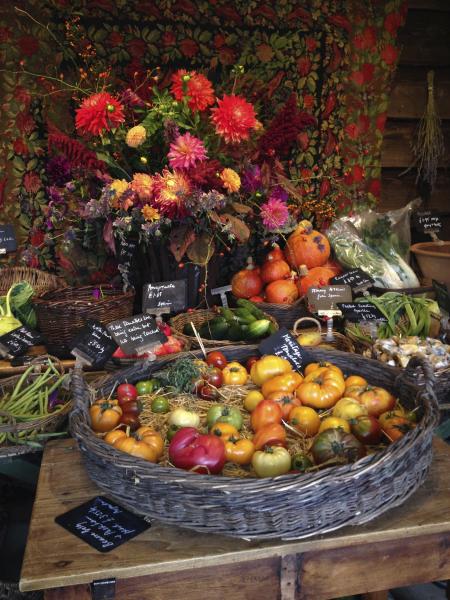
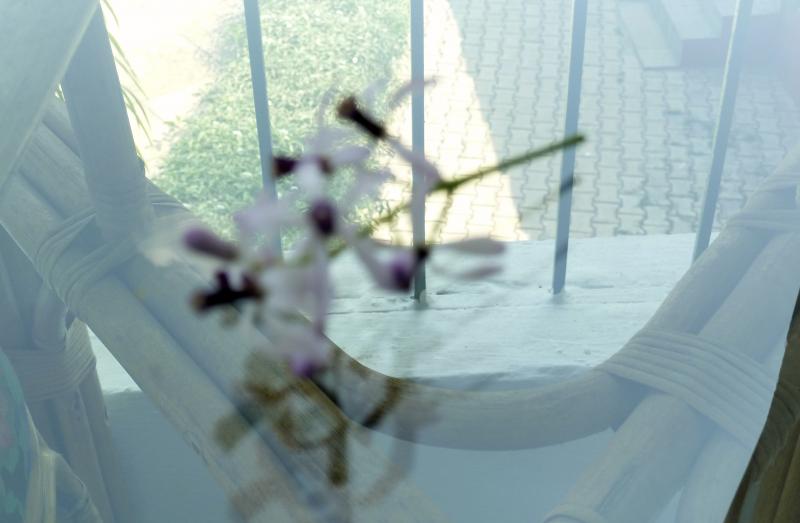

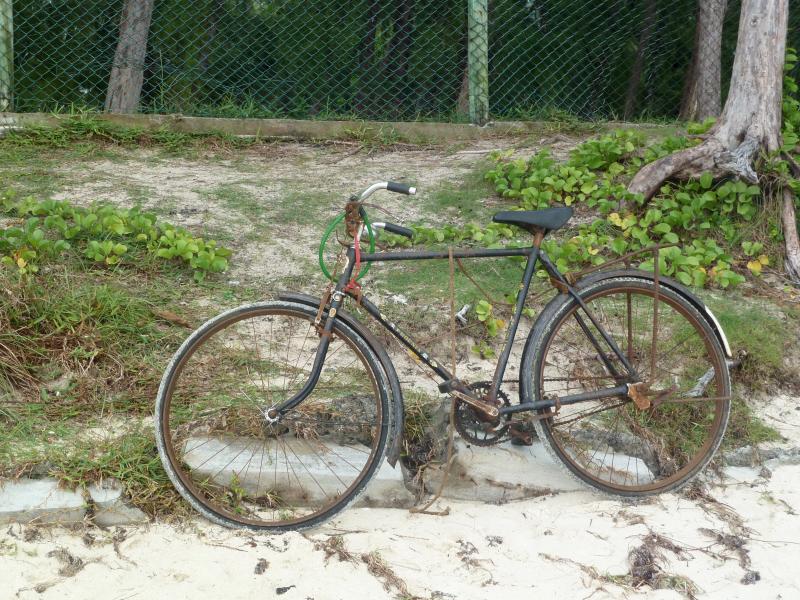






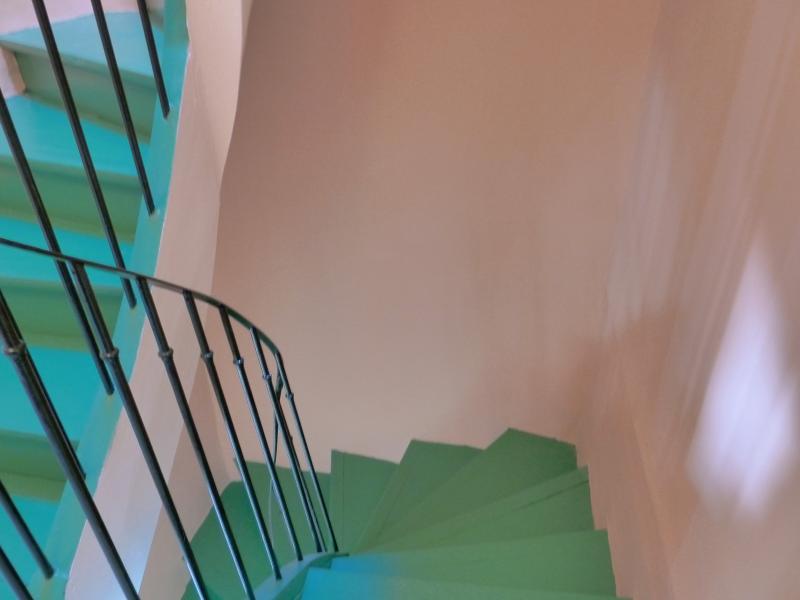

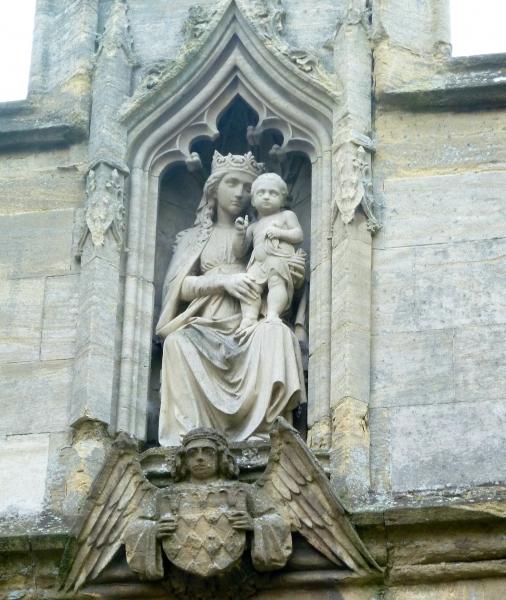

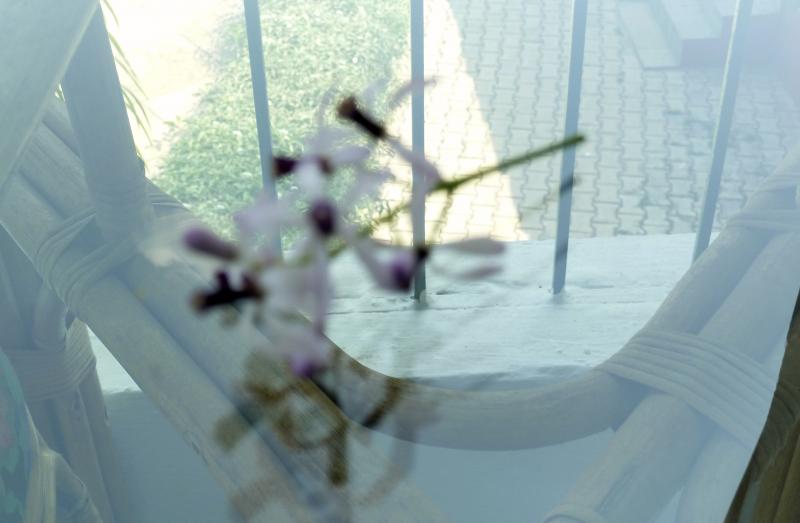
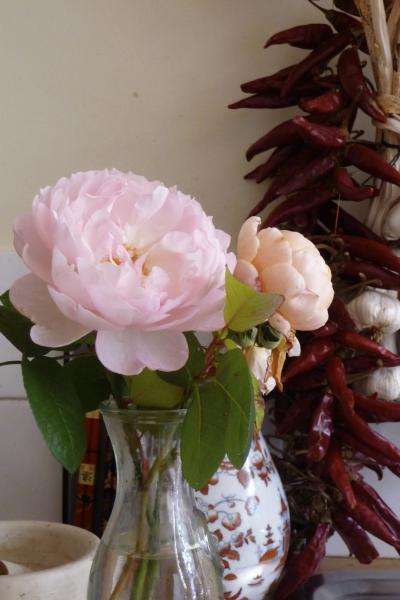

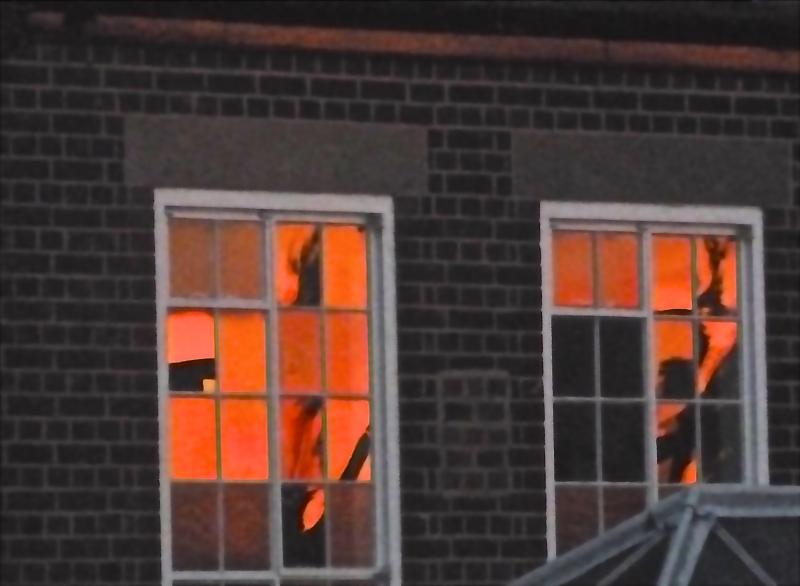
Really enjoyed your descriptions of both the voyage and the museum. Very picturesque (what else can I say?!) pictures.
Ta, AshaRani. Wish you had been there too.
Frank Gehry’s Stata Center at MIT (Cambridge) is one one my favourite architectural delights — totally whimsical, brilliant, and luxuriously spacious! His soaring ceilings, curved “corners,” and un-
conventional use of building material is fascinating. I haven’t been to Bilbao, but can well visualize the Guggenheim. Have you seen the documentary on Gehry that shows how he begins, plans and construct his buildings? Fabulous!
Someone told me he is a very nice man too!
Thanks for pointing me to this. Great photographs and impressions of your journey. So glad you had a smooth crossing of the Bay of Biscay, or was it the ship’s technology mastering the rough water? Sorry you had to blush for the British passengers.
Best
MR